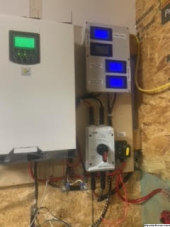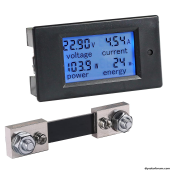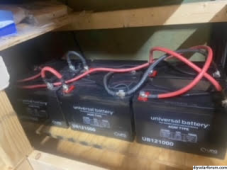samhal
New Member
I guess maybe I don't understand things very well. I'm currently running 1200 watts of solar panels (series/parallel) for 24 volts into an older 'hybrid' controller/inverter (2.4K PWM EASUN, a chinese knockoff) hooked up to 6 x 100ah AGM batteries, again in series/parallel for 24 volts. The system is used for my powering my workshop.
The system works. However...
If I remove the line utility aspect, the system runs off batteries and uses solar only to charge the batteries. Once the batteries reaches a 'stable' charge for the task at hand, solar power tapers off unless needed to charge the batteries again. None of the solar seems to be used in actually powering the demand from the powertools...it's all about the batteries. Seems like a waste of solar energy to me!
Also, when selected, the battery bank every time drops immediately to 52% (even if all I have on are the shop light - about 200 watts).
Solar power maintains the battery bank around the 50-57% range, never more. When I activate the line utility mode the batteries jump back to 100%. I don't think I've ever hit beyond 600-ish watts of solar power even tho there's much more to be had. Why can't my solar panels take my batteries back to 100%?
So, is all this normal performance? I "think" I have things configured correctly, but who knows?
Thanks,
Sam
The system works. However...
If I remove the line utility aspect, the system runs off batteries and uses solar only to charge the batteries. Once the batteries reaches a 'stable' charge for the task at hand, solar power tapers off unless needed to charge the batteries again. None of the solar seems to be used in actually powering the demand from the powertools...it's all about the batteries. Seems like a waste of solar energy to me!
Also, when selected, the battery bank every time drops immediately to 52% (even if all I have on are the shop light - about 200 watts).
Solar power maintains the battery bank around the 50-57% range, never more. When I activate the line utility mode the batteries jump back to 100%. I don't think I've ever hit beyond 600-ish watts of solar power even tho there's much more to be had. Why can't my solar panels take my batteries back to 100%?
So, is all this normal performance? I "think" I have things configured correctly, but who knows?
Thanks,
Sam







